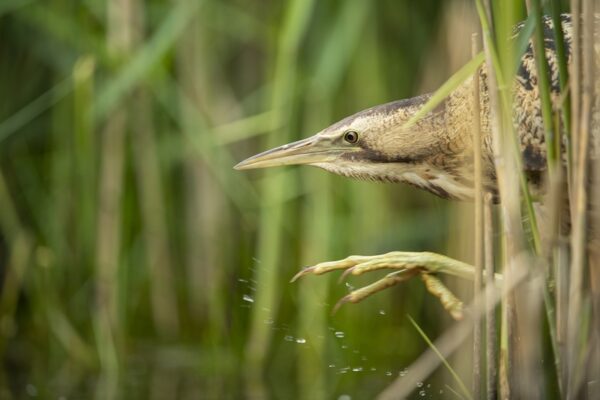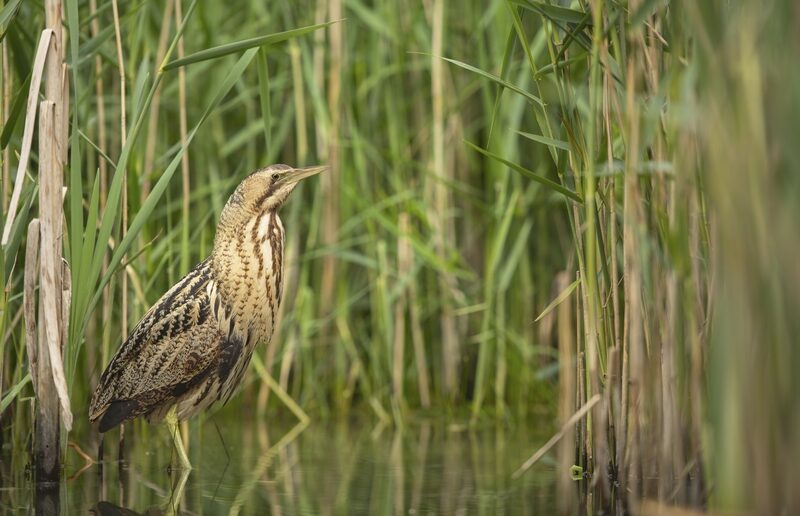It has been another record-breaking year for Bitterns, the loudest bird in Britain, with 228 booming males counted in 2021.
A member of the heron family, Bitterns went extinct across the UK in the 1870s due to a combination of over-hunting for food and draining of their wetland homes for agriculture. They returned to Britain in the early 20th century, and restoration of wetlands has allowed their numbers to more than double in a decade, with over half on RSPB reserves.

A new survey by the RSPB and Natural England has found 228 booming males counted in 2021, up from 209 in 2019, after recording in 2020 was affected by the coronavirus pandemic.
Being well-camouflaged, shy birds that like to hide in reedbeds, the most reliable way to count Bitterns in the breeding season is to listen for the male’s booming foghorn call which can be heard from three miles away. When the first annual surveys began in 1990, numbers were very low. In 1997 there were only 11 males across the whole UK, leaving them very close to a second national extinction.
A key part of bringing bittern numbers back up was restoring, recreating, and protecting their wetland habitats. Many wetlands were drained in the 19th and 20th centuries to make space for agriculture, leaving the bittern fewer and fewer places to breed. Rewetting these spaces also helps prevent flooding and fights the climate crisis – wetlands are incredible carbon sponges, with coastal wetlands locking in more carbon that forests.
Simon Wotton, RSPB Senior Conservation Scientist, said: “The bittern’s recovery shows how quickly nature can bounce back when given the chance – and we all benefit from creating healthy spaces for wildlife. People get such joy from hearing the bittern’s mighty foghorn-like song, and their wetland home also protects people from flooding and helps to soak up carbon. It’s a win-win for wildlife and people, and we hope that one day the boom of the bittern will be heard around the UK once more.
“I want to say a huge thank you to all the volunteers, conservation site staff, and landowners who monitored sites in 2020 and 2021 during the Covid-19 pandemic. Without them and everyone who uploaded their recordings to online sources we would have lost invaluable information about these endangered and magnificent birds.”
Although bitterns are still a rare bird, there are some great places to experience them first-hand including these RSPB reserves:
- Ouse Fen, Cambridgeshire
- Ham Wall, Somerset Avalon Marshes
- Lakenheath Fen, Suffolk
- Minsmere, Suffolk
- Leighton Moss, Lancashire
- St Aidan’s, West Yorkshire
- Cors Ddyga, Anglesey, Wales
Ouse Fen, Ham Wall, and Lakenheath Fen were all created during the mid-1990’s to help boost bittern populations as part of one of the Bittern EU LIFE projects.




